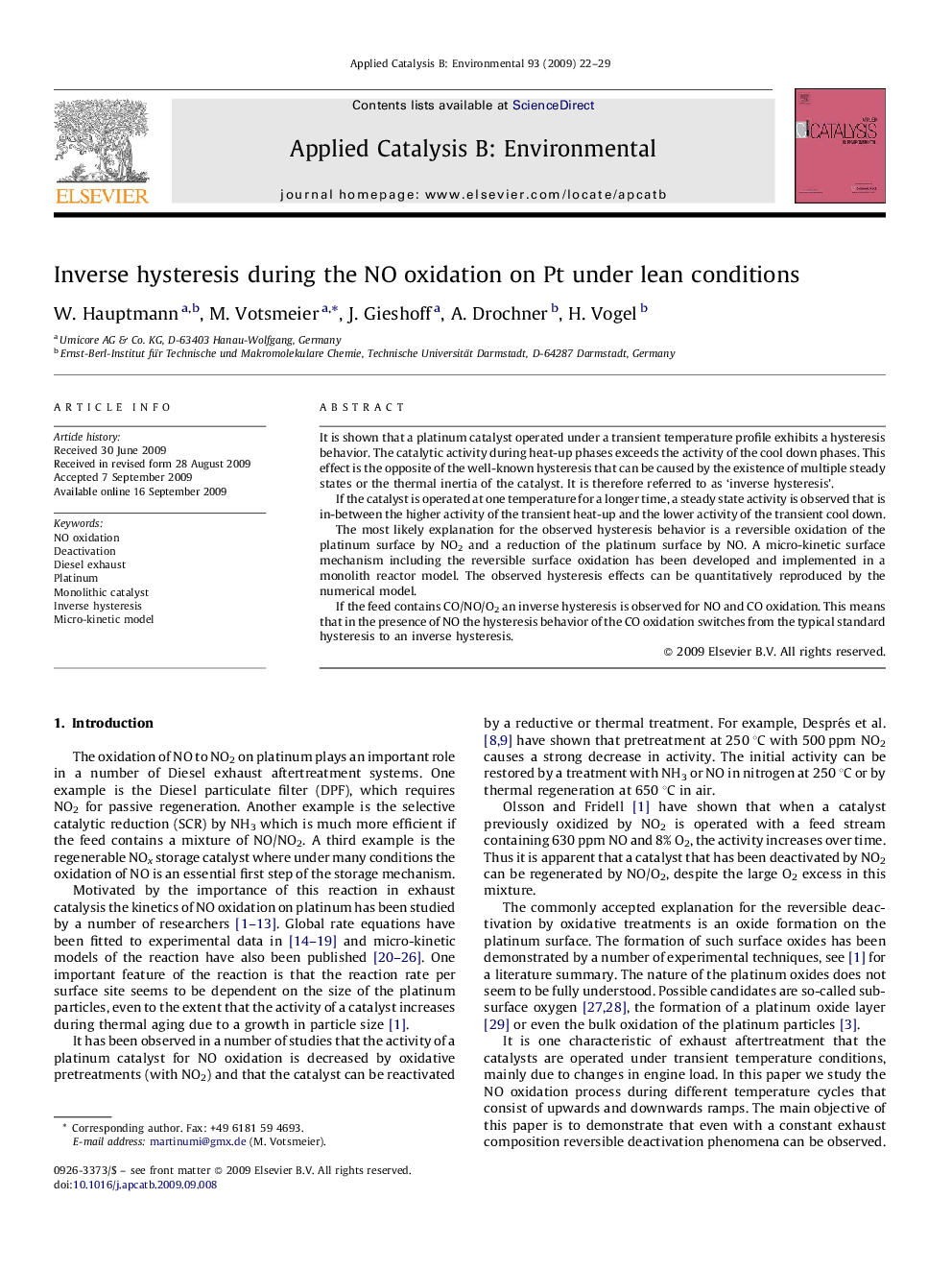| Article ID | Journal | Published Year | Pages | File Type |
|---|---|---|---|---|
| 47343 | Applied Catalysis B: Environmental | 2009 | 8 Pages |
It is shown that a platinum catalyst operated under a transient temperature profile exhibits a hysteresis behavior. The catalytic activity during heat-up phases exceeds the activity of the cool down phases. This effect is the opposite of the well-known hysteresis that can be caused by the existence of multiple steady states or the thermal inertia of the catalyst. It is therefore referred to as ‘inverse hysteresis’.If the catalyst is operated at one temperature for a longer time, a steady state activity is observed that is in-between the higher activity of the transient heat-up and the lower activity of the transient cool down.The most likely explanation for the observed hysteresis behavior is a reversible oxidation of the platinum surface by NO2 and a reduction of the platinum surface by NO. A micro-kinetic surface mechanism including the reversible surface oxidation has been developed and implemented in a monolith reactor model. The observed hysteresis effects can be quantitatively reproduced by the numerical model.If the feed contains CO/NO/O2 an inverse hysteresis is observed for NO and CO oxidation. This means that in the presence of NO the hysteresis behavior of the CO oxidation switches from the typical standard hysteresis to an inverse hysteresis.
